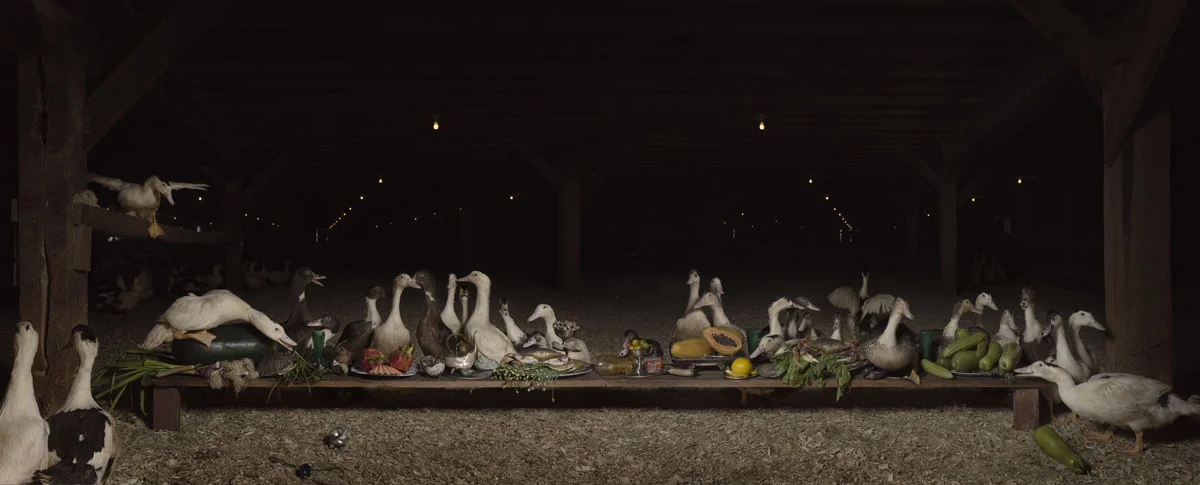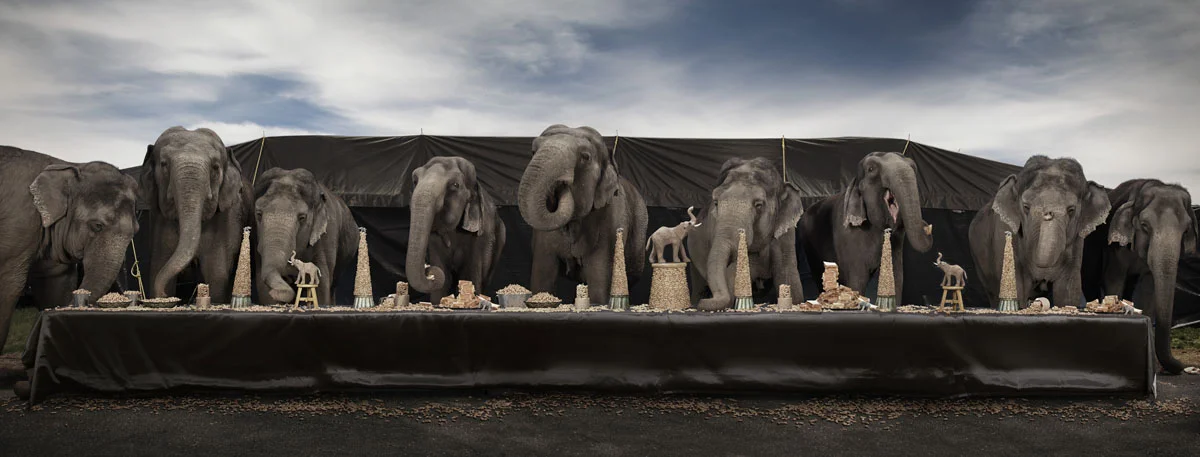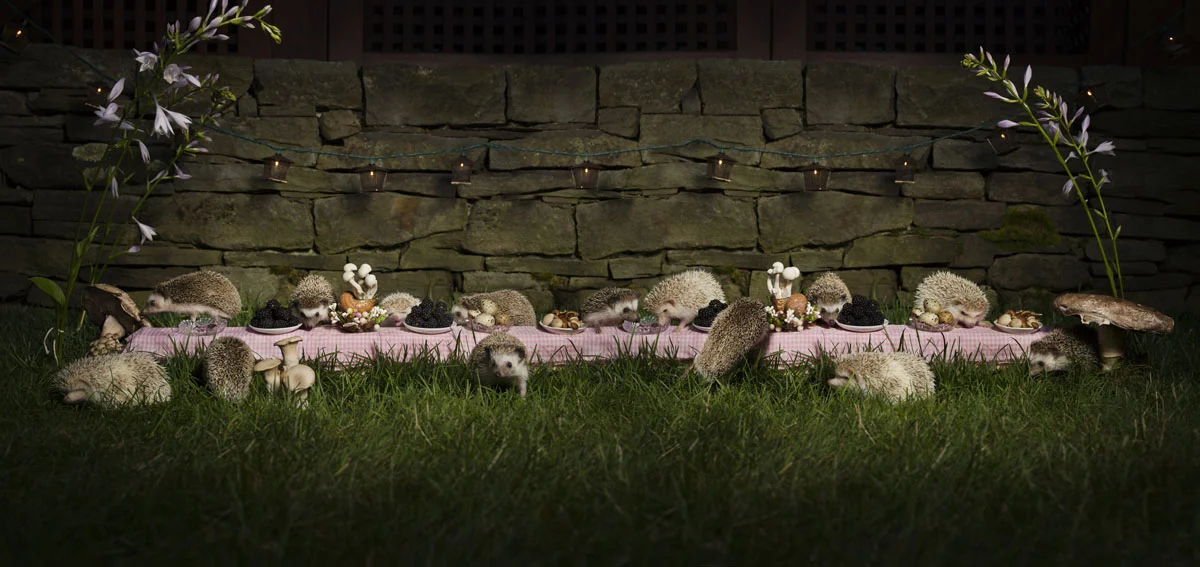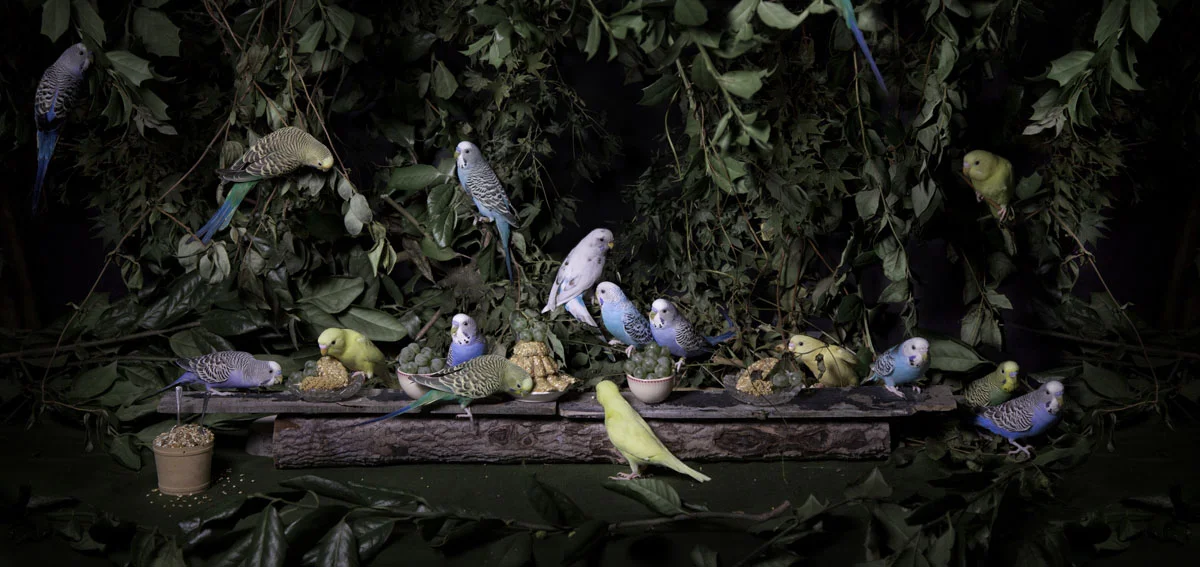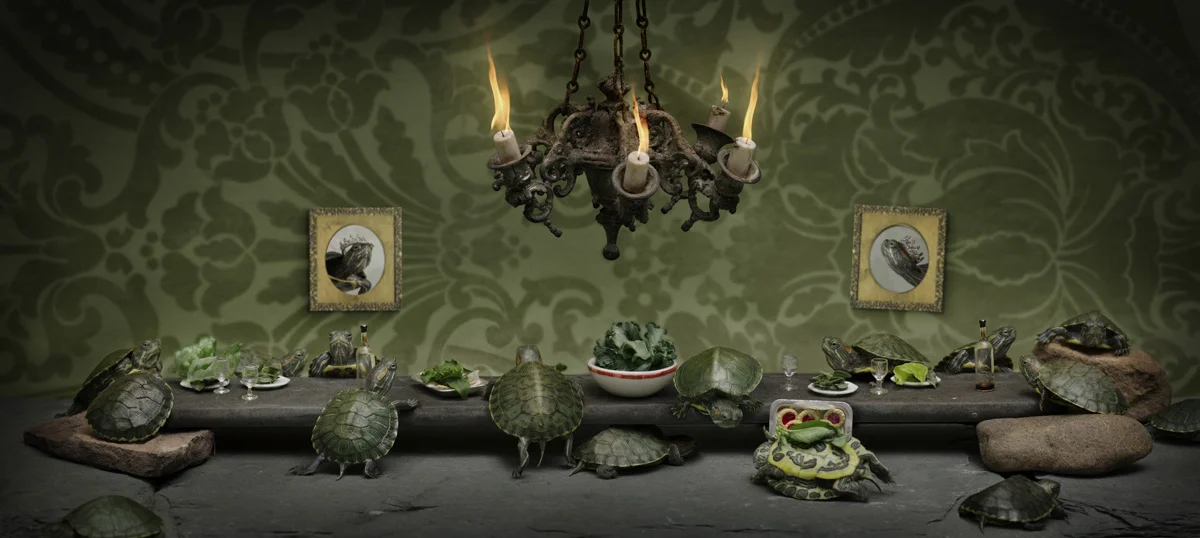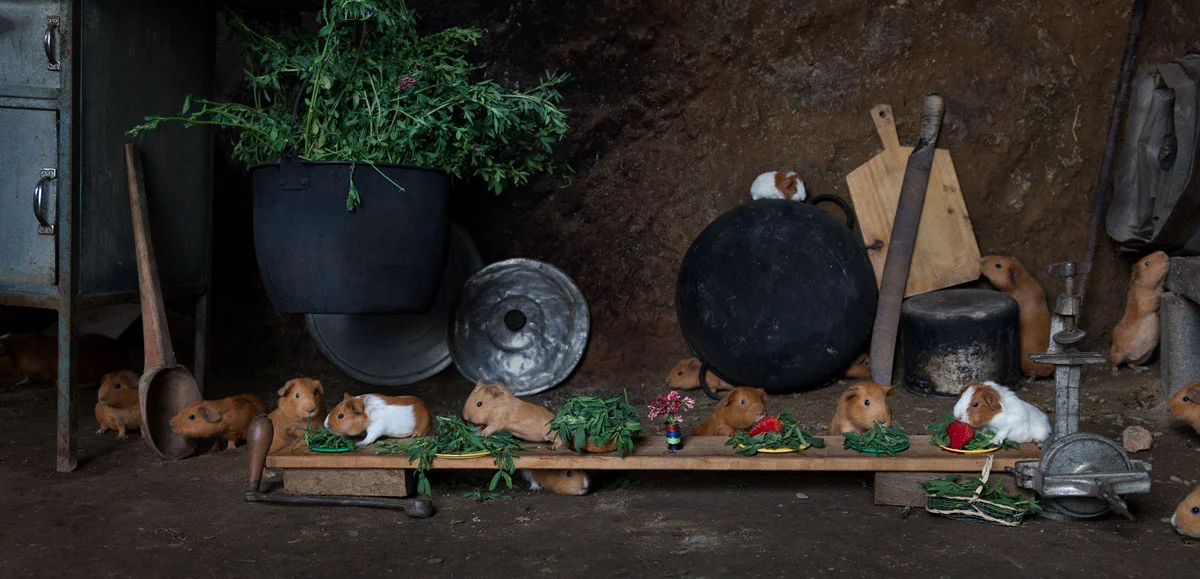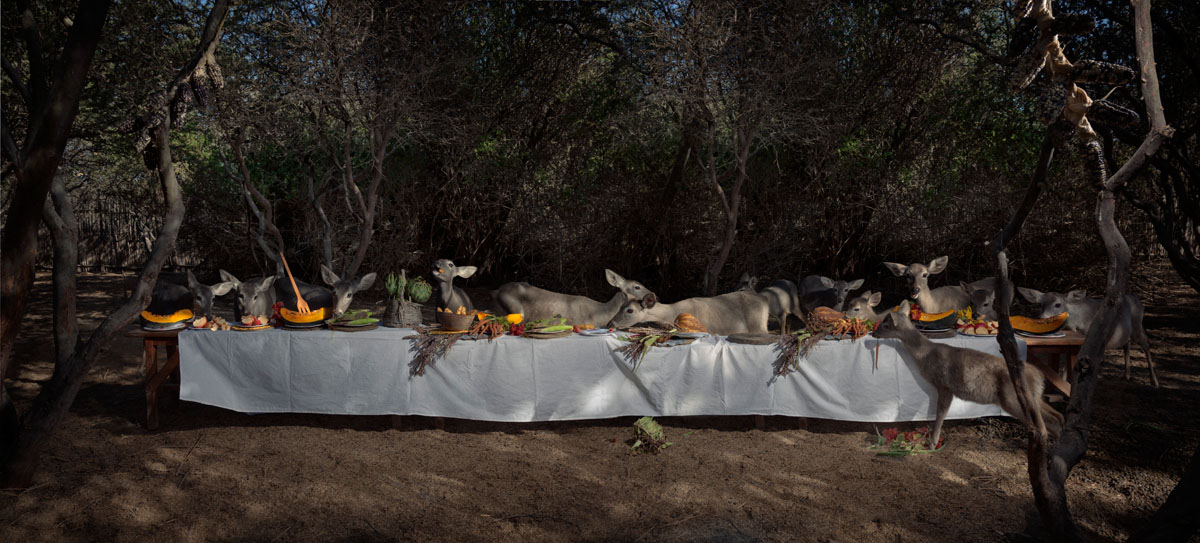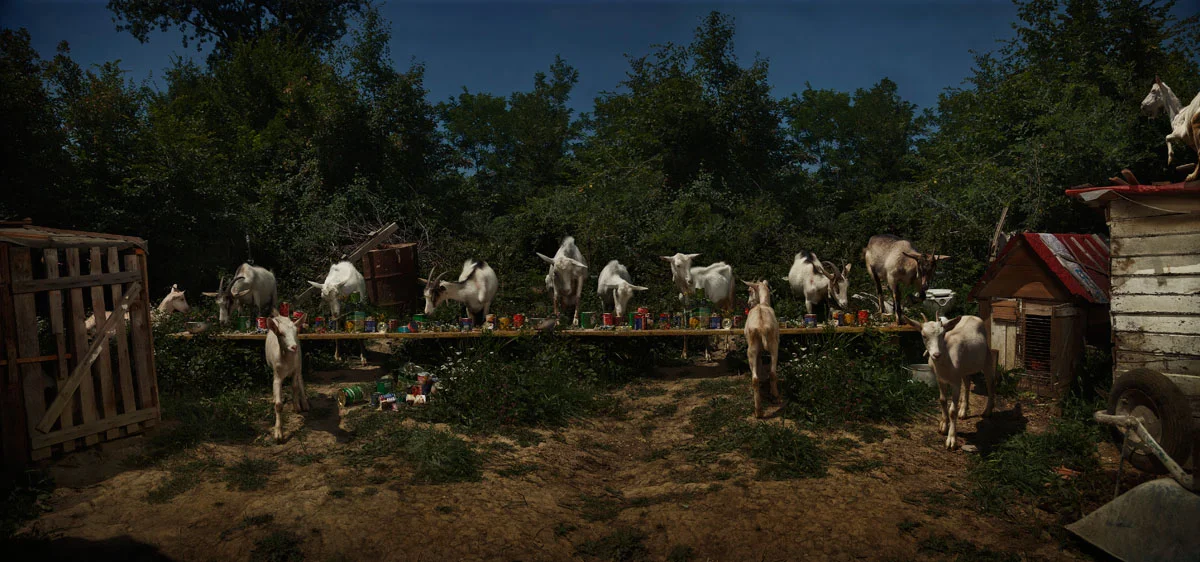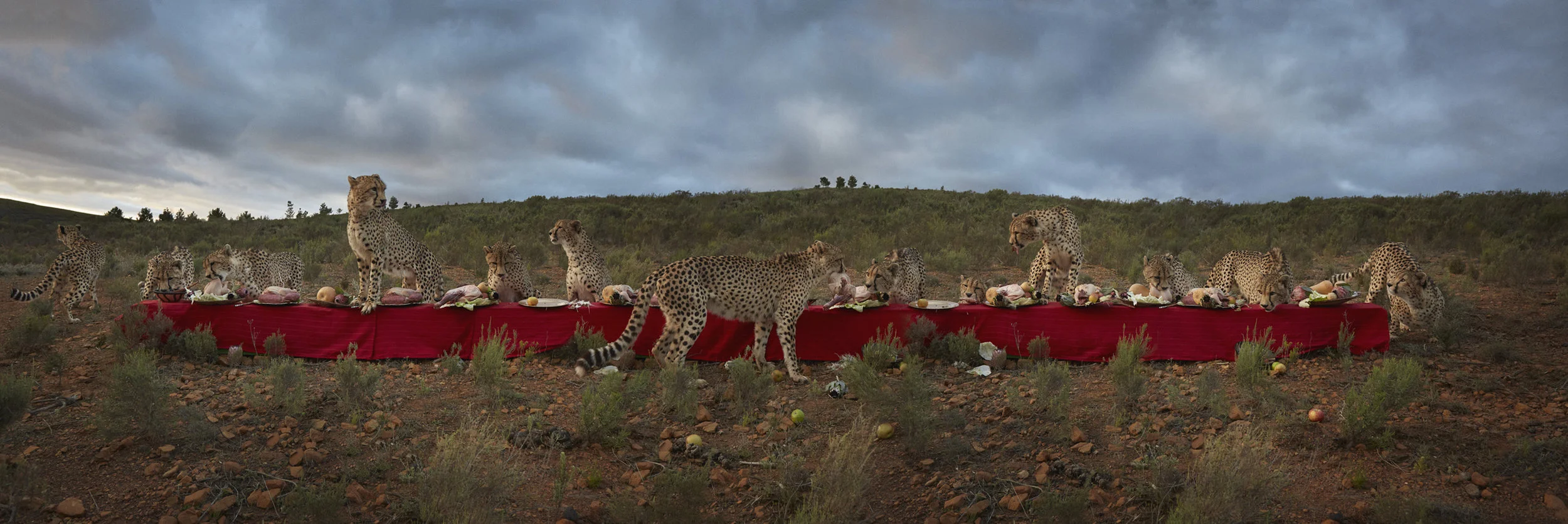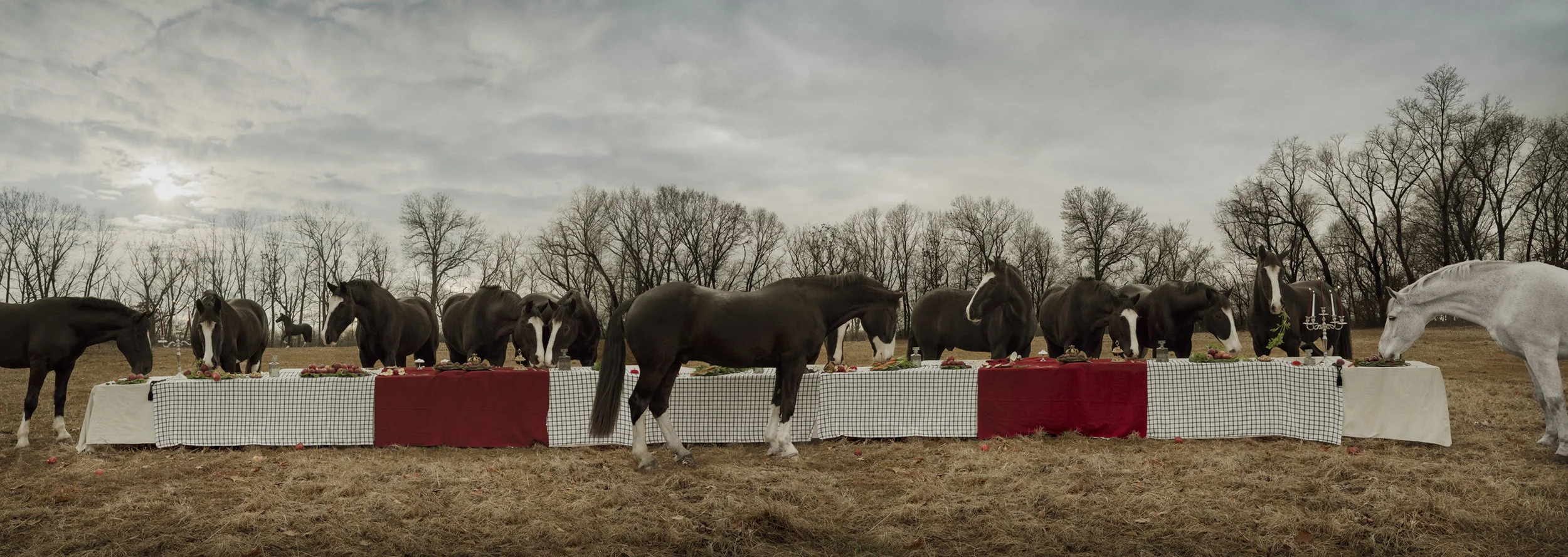The Fantastical Feasts
Photographer: Claire Rosen
ARTIST STATEMENT
The banquet is a historically defining characteristic of culture and conjures up vivid and colorful imagery, plentiful food and wine, exotic recipes, lavish presentations and glorious surroundings. The evolution of formal dining begins in the medieval era, where dining became a sign of social status. A change in society had emerged during the era of the Middles Ages when travel, prompted by the Crusades, led to a new and unprecedented interest in beautiful objects and elegant manners. This change extended to food preparation and presentation resulting in epic food arrangements with exotic colors and flavorings. Again, a boom in exploration and colonization in the Victorian Era yielded an interest in the exotic “other”, a fascination which also extended to animals and the natural world. The wealthy began to fill their houses with costly, splendid goods, their table settings became more elaborate and dining became a pageant in its own right.
This series of whimsical panoramic photographs depict animals reveling around elaborate banquet tables, inspired by Leonardo da Vinci’s masterpiece, "The Last Supper” and by Pierre Subleyras classic painting, “The Feast in the House of Simon”. The intricate table spreads are carefully arranged, in the style of dutch still life paintings of the 17th century. The series features anthropomorphized creatures great and small; from Elephants enjoying piles of peanuts and large stacks of peanut butter sandwiches to Honeybees swarming miniature trays of nectar flowers, and many other creatures winged, hoofed and found under the sea. Some of the animals are exotic, some we see everyday. Created during extensive travel with goats from a suburb of Sarajevo in Bosnia, lar gibbons from Thailand, starfish from Norway, bison from Indiana USA, and three toed sloths found along the Amazon River in Peru to name just a few.
The series utilizes the icon of the banquet and "Last Supper" to subtly encourage viewers to consider those in the animal kingdom more humanly affording them more rights and status. To see animals humanely sometimes requires us to see them as human-like. By placing animals in a setting typically reserved for humans, it raises the question of whether we may have more in common than we admit. The feasts invite the viewers to reflect on the nature of society, our relationship and responsibility to the creatures we share the planet with.
